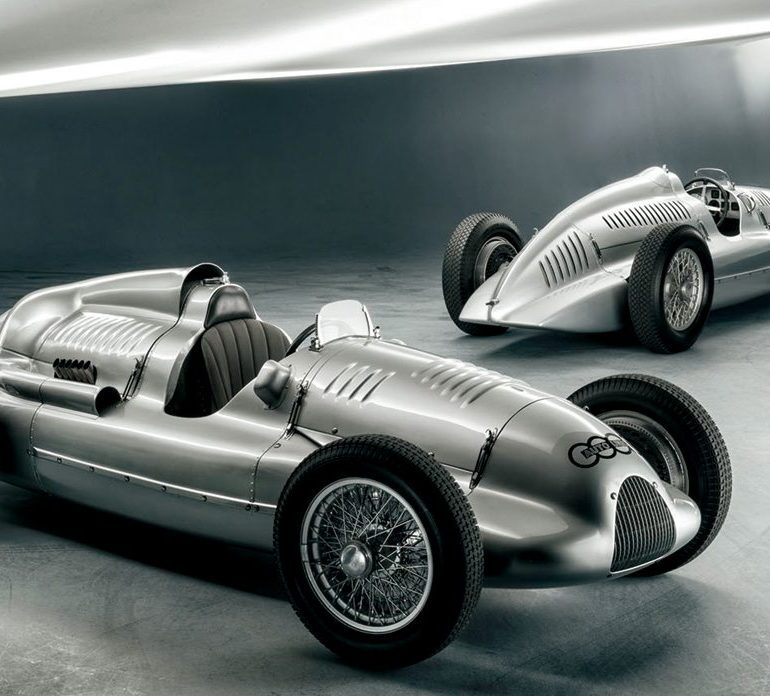Audi has recently reacquired an extremely rare Auto Union Silver Arrow racing car consisting largely of original parts. It is the Auto Union twin-supercharger Type D dating from 1939, one of the two legendary “Karassik cars.” Audi AG now owns three of the five Auto Union racing cars that can claim to be original.
The Silver Arrow legend was born in the 1930s when Auto Union and Mercedes-Benz appeared on the international motor racing scene with German racing cars of totally new design, with a silver finish and futuristic appearance, and enjoyed immediate success. The two manufacturers dominated Grand Prix racing until the outbreak of World War II in 1939.
Drivers from that era such as Bernd Rosemeyer, Tazio Nuvolari and Hans Stuck (Auto Union), and Rudolf Caracciola, Manfred von Brauchitsch and Hermann Lang (Mercedes-Benz) are still revered by modern motor sport enthusiasts.
While Mercedes-Benz was able to rescue almost all its Silver Arrow cars in the wake of Germany’s defeat, fate was less kind to Auto Union. Its hometown of Zwickau was occupied by the Soviets, Auto Union was liquidated and the factories shut down. The Russian occupying forces found the Silver Arrows and spirited them away behind the Iron Curtain as part of Germany’s reparation payments. All trace of them quickly vanished.
They had been regarded as irretrievably lost by the new Auto Union GmbH (today’s Audi AG) when it was established in Ingolstadt in 1949. Only one Auto Union Type C remained accessible, having been presented to the Deutsches Museum in Munich before the war, but subsequently damaged by Allied bombs.
At the end of 1970, the first rumors began to be heard that one of the long lost Auto Union racers had been located somewhere in the former Soviet Union. American collector Paul Karassik came to Europe and began searching for the car. It took more than a decade and numerous visits to the USSR before he tracked down the remains of two dismantled Auto Union cars in Russia and the Ukraine and managed to acquire them.
Eventually he was able to liberate the parts and bring them out into Western Europe. The engines, chassis, axles and gearboxes were then flown to Florida, and in 1990 Karassik made initial contact with experts, including Audi’s Tradition department, which acted as advisors for the impending restoration. Karassik entrusted the job to the respected British restoration firm of Crosthwaite & Gardiner.
After a thorough examination of available components, the decision was made to rebuild a Type D single-supercharger racing car to 1938 specification, and a 1939 version of the Type D with twin superchargers. Both cars needed complete replica bodies to be constructed, since nothing of the original bodies had survived. Rod Jolley Coachbuilding built the new bodies in England, completing the first one, to 1938 specification, in August of 1993. A year later the twin-supercharger 1939 car was also finished and, with support from Audi, both cars appeared on track for the first time in 55 years at the Eifel Classic at the Nürburgring on October 1, 1994.
In recognition of its support for the rebuild, Audi was able to exhibit the 1938 car, which was eventually purchased by Audi AG in July of 1998. The 1939 twin-compressor car, however, returned to Florida, and in the spring of 2000 Karassik sold it to a private collector. With its purchase of the Type D twin-supercharger car, Audi AG now owns all three Auto Union racing cars recovered from what was formerly the USSR.
As noted in our May issue, the revived Auto Union Type Ds are to leave their new home at the Audi museum mobile in Ingolstadt and make a guest appearance at the Goodwood Revival on the weekend of September 14-16.




